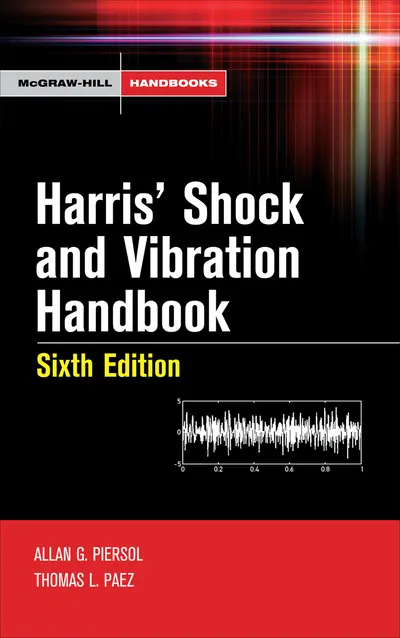My Account Details

ISBN10: 0071508198 | ISBN13: 9780071508193

Step 1 . Download Adobe Digital Editions to your PC or Mac desktop/laptop.
Step 2. Register and authorize your Adobe ID (optional). To access your eBook on multiple devices, first create an Adobe ID at account.adobe.com. Then, open Adobe Digital Editions, go to the Help menu, and select "Authorize Computer" to link your Adobe ID.
Step 3. Open Your eBook. Use Adobe Digital Editions to open the file. If the eBook doesn’t open, contact customer service for assistance.
Publisher's Note: Products purchased from Third Party sellers are not guaranteed by the publisher for quality, authenticity, or access to any online entitlements included with the product.
The classic reference on shock and vibration, fully updated with the latest advances in the field
Written by a team of internationally recognized experts, this comprehensive resource provides all the information you need to design, analyze, install, and maintain systems subject to mechanical shock and vibration. The book covers theory, instrumentation, measurement, testing, control methodologies, and practical applications.
Harris' Shock and Vibration Handbook, Sixth Edition, has been extensively revised to include innovative techniques and technologies, such as the use of waveform replication, wavelets, and temporal moments. Learn how to successfully apply theory to solve frequently encountered problems. This definitive guide is essential for mechanical, aeronautical, acoustical, civil, electrical, and transportation engineers.
EVERYTHING YOU NEED TO KNOW ABOUT MECHANICAL SHOCK AND VIBRATION, INCLUDING
- Fundamental theory
- Instrumentation and measurements
- Procedures for analyzing and testing systems subject to shock and vibration
- Ground-motion, fluid-flow, wind-. and sound-induced vibration
- Methods for controlling shock and vibration
- Equipment design
- The effects of shock and vibration on humans
Need support? We're here to help - Get real-world support and resources every step of the way.